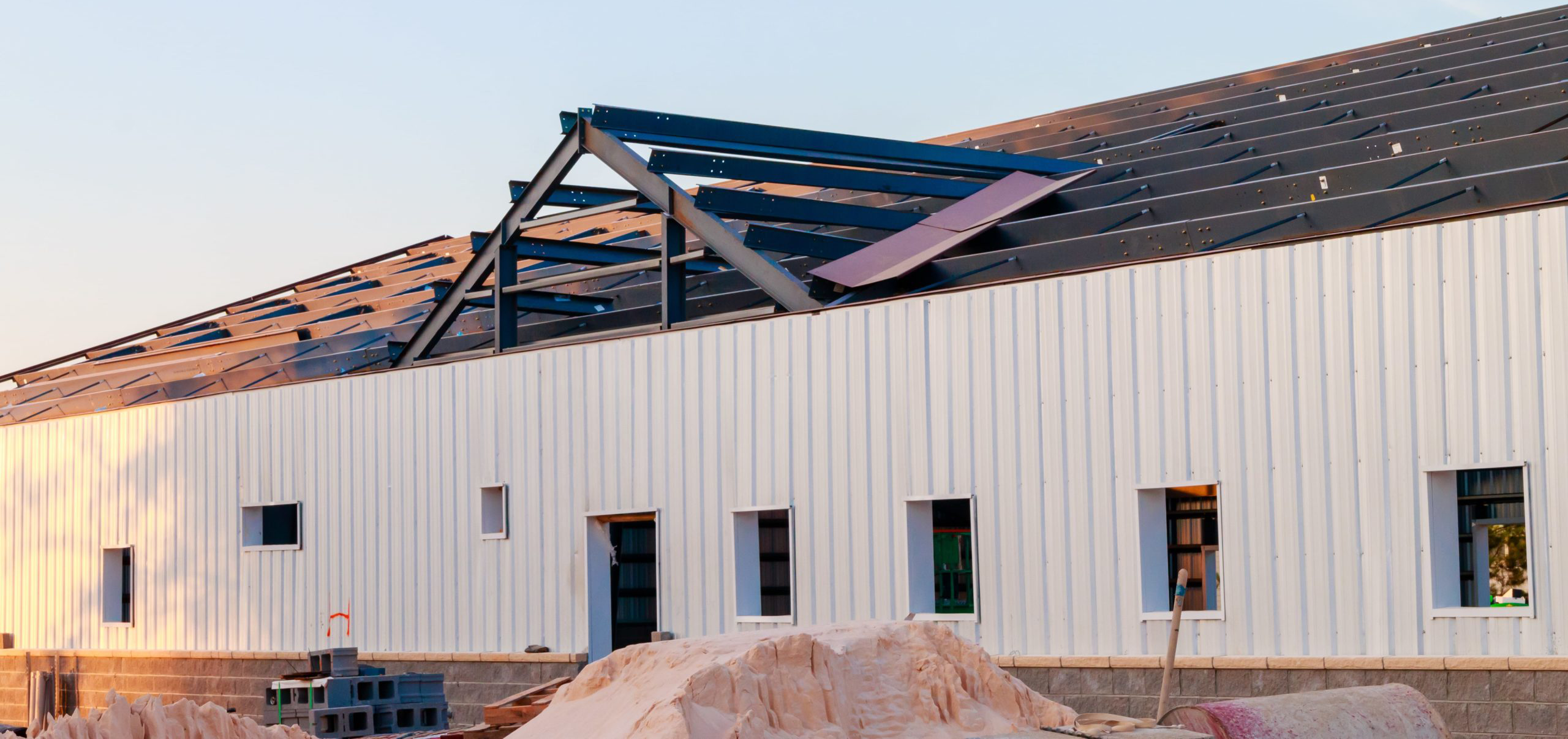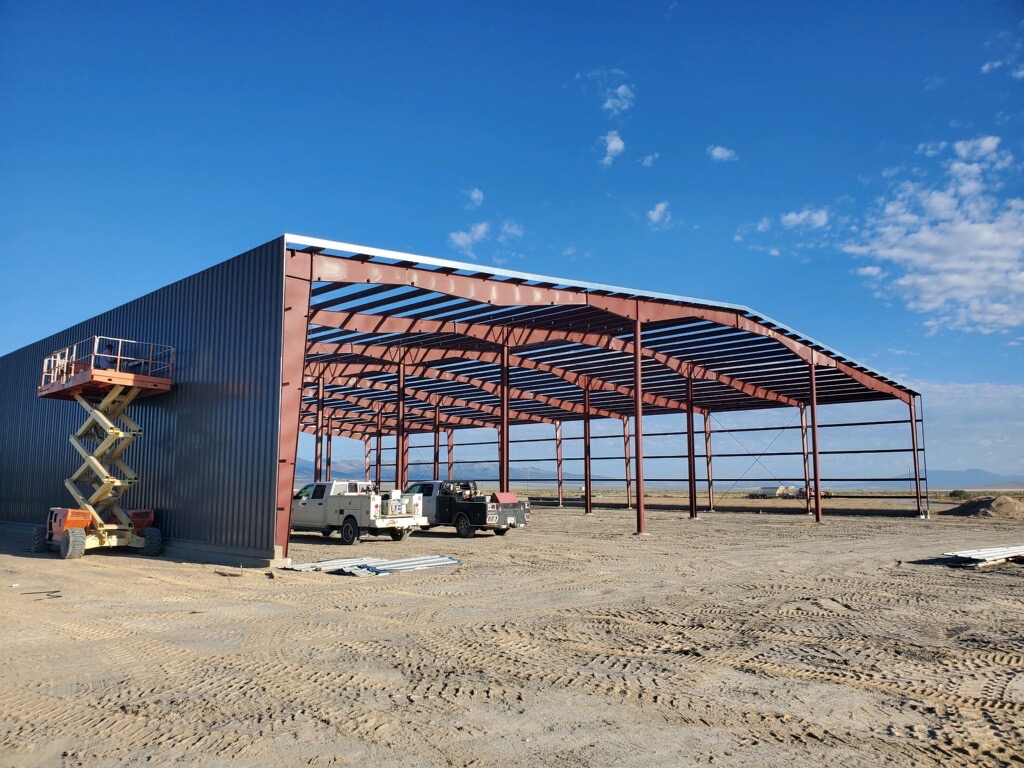
What is the Latest Technology in Prefabricated Steel Construction?

Using prefabricated steel structures in modern construction allows for improved durability, more possibilities and customization, and a price point that meets many clients’ budgets. New technology also allows for greater flexibility in the design and application of steel structures.
Additionally, metal buildings remain among the most popular choices for various applications, from framing to aviation. Let’s examine some of the other technological advancements driving the popularity of the prefabricated steel building market.
What are the Most Exciting Ideas in the Construction Industry Today?
Like most modern industries, construction is seeing a wave of technological advances which are overhauling previous physical or manual tasks into a variety of high-tech approaches which focus on efficiency and specificity.
Automated Construction
Similar to the manufacturing wave at the turn of the 20th century, or the automobile manufacturing of the mid-century, the construction industry is beginning to utilize automation as a viable option for more efficiently delivering similar results as traditional construction methods.
Automated construction looks to streamline the process of building manufacturing. By only needing limited pieces or parts to create a variety of styles or structures, the manufacturing process can be relatively inexpensive and pieces easily replicable.
Plus, with the factory work being automated, workers can manage the construction and perform quality control while using the machines to complete the difficult labor.
Digital Designing Using BIM and VR
Sometimes, you just need to be in a room to visualize what it will look like with different windows, doors, colors, or other variables. With new construction, it can be difficult to see precisely what the result will look like without seeing the actual space.
Fortunately, technology offers amazing options for merging design with virtual visualization and modeling. VR, or virtual reality and BIM or building information modeling are two applications of technology in which spaces, rooms, or even whole buildings can be designed and created in a virtual space. Clients can visualize the buildings’ look, including interior details for customization and coloration.
For contractors, they can give virtual tours of the completed structure and build before the foundation has even been set. Clients and contractors can review and discuss necessary changes far before the building begins, meaning fewer change orders or redesigns during construction. More specifics and agreement on the front end means less wasted time, added materials, and labor costs once the project is in full swing.
IT-Centric Infrastructure
One of the biggest trends in prefabricated building and construction, in general, is the greater use of IT and cloud-based technology. By virtue of better and more powerful operating systems, contractors and building designers have incorporated more technology into the building process.
From construction accounting software programs, which manage much of the facts and figures of jobs, to programs designed to help construct the actual physical structure and floorplans, technology is able to add so much more to the abilities of contractors and builders.
With cloud-based technology, these exact software solutions can now be managed, shared, and reviewed from virtually any location or timeframe. No longer does office work have to stay in the office. Cloud-based technology allows authorized personnel or clients to access and interact with the software and data for different jobs, as long as they have a device with internet connection capabilities.
Now contractors and clients can meet at the job site to discuss specifics while remaining connected with the software necessary for designing and completing the project. Job information can be added, deleted, or amended with a few clicks on a laptop or mobile device.
Plus, the software is integrated with other software modules or systems, which offers contractors and clients real-time analysis of the status of the job, including inventory on needed materials, equipment, and machinery, labor and specialty services, legal and tax-related concerns, and itemized invoicing and billing. Information has never been so readily available for all aspects and stages of construction jobs.
Green Designing
Designing with the environment in mind has grown to be much more than a niche trend. Green designing has also expanded to become much more than just saving a few trees.
Green designing is about maximizing any use of natural materials and resources and reducing waste as much as possible. With prefabricated and pre-engineered green building designs, manufacturers are looking for ways to offer durable and long-lasting products with much less environmental impact since they are constructed with tighter overage percentages derived from specifically engineered designs.
Equally, the strength and durability of prefabricated steel buildings and parts mean they won’t need to be replaced or repaired for many years. Even the time crews spend putting together the pre-fabricated parts is faster and more efficient, saving even more resources and producing less waste.
Circular Building
Although new building construction will continue to be a driving force in the construction industry, a growing number of voices are calling for the renovation and reuse of current structures. Circular building and renovation looks to improve and maintain existing buildings, reduce the use of natural materials and resources, and minimize carbon emissions.
By minimizing the amount of new materials used, and focusing on renovating existing structures, the costs for circular buildings are also attractive. By including prefabricated designs into the equation, which also positively impact price points, it’s understandable why many builders are looking to take advantage of this emerging trend.
There are also benefits to choosing other options than building demolition. When a large building is demolished, large amounts of dust and particulates are released into the air, sometimes filled with toxins or heavy metals. Crews and machines also have to clear the rubble and debris away, and ship it to a new location to be processed. The entire process is inefficient, wastes more materials, and emits more atmosphere emissions.
A Bright Future
The commercial building and construction industry is one of many industries benefiting from more powerful and functional technology and software. Leveraging technology helps provide more efficient building materials and techniques, mutually beneficial for customers and construction companies.
At Coastal Steel Structures, we recognize the strength and value prefabricated steel structures offer our clients and strive to provide equivalent professionalism and information about these fantastic products.
Modular metal buildings provide our clients with a durable product that can conform to many different uses. With customization, prefabricated steel buildings can be configured precisely to the customer’s wants and needs. Contact us to learn more about building with engineered steel structures.
LETS WORK TOGETHER ON YOUR DREAMS!
Are you ready to start your steel building journey? Request a quote today and speak to one of our experienced team members to set you up for success and make your vision a reality!
GET A QUOTE